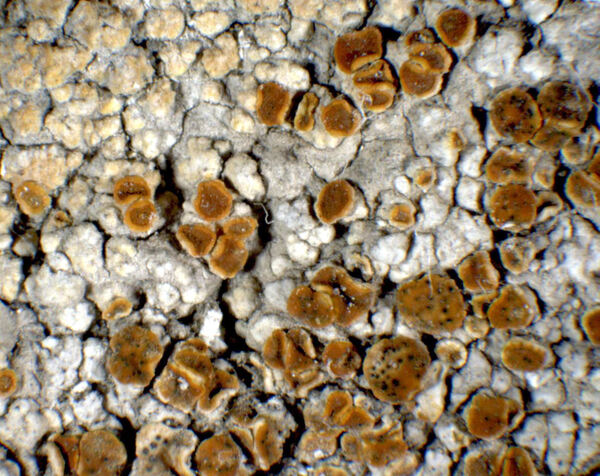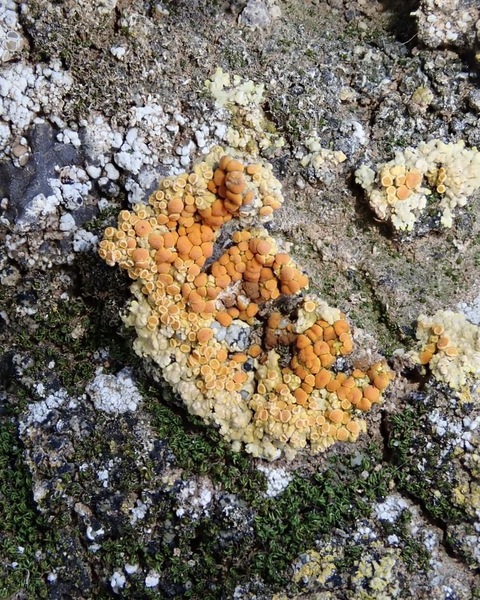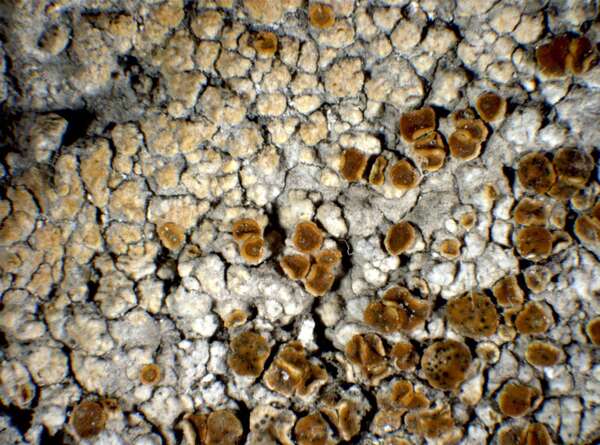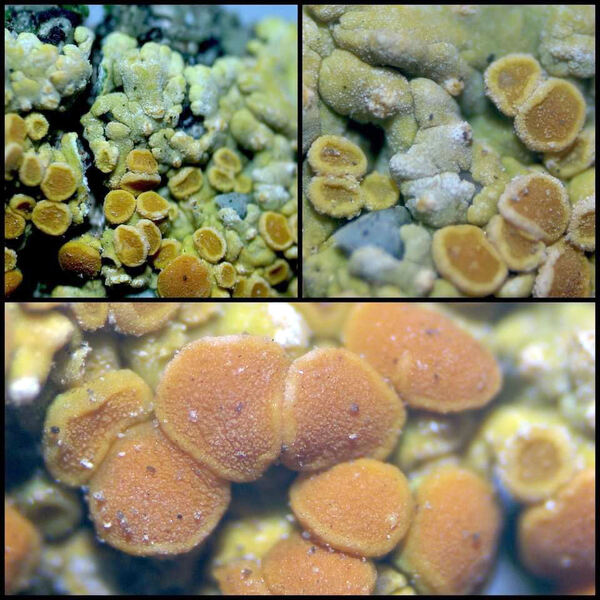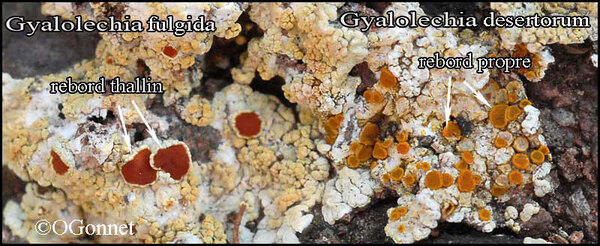Gyalolechia desertorum (Tomin) Søchting, Frödén & Arup
in Arup & al., Nord. J. Bot., 31: 70, 2013. Basionym: Placodium desertorum Tomin - Über Bodenfl. aus Halbwüsten Süd-Ost Russlands, Woronesh: 29, 1926.
Synonyms: Caloplaca geoica H. Magn.; Fulgensia bracteata auct. eur. austr.; Fulgensia desertorum (Tomin) Poelt
Distribution: N - Emil (Nimis & al. 1996, Fariselli & al. 2020), Lig. C - Abr (TSB 25008), Sar.
Description: Thallus crustose, episubstratic, verrucose-areolate, sulphur- to orange-yellow, more or less pruinose, forming 1-2(-3) cm wide patches. Areoles flat to mostly convex, contiguous, often sitting on a rather thick hypothallus, the marginal ones sometimes elongate, to 1-2 mm long, the central ones strongly convex, almost verrucose, 0.3-0.5 mm thick. Upper cortex paraplectenchymatous, with an epinecral layer; medulla white, 40-160 μm thick; lower cortex absent. Apothecia lecanorine, sessile, 0.5-1.5 mm across, with an orange to brownish orange, flat to slightly convex, rugose disc, and a thin margin which at maturity separates into a darker and thinner proper margin and a paler thalline margin. Epithecium orange-brown, K+ red; hymenium colourless, >70 µm high; hypothecium colourless. Asci 8-spored, clavate, functionally unitunicate, apically thickened with a broad internal beak, the inner part of apex and external cap I+ blue, Teloschistes-type. Ascospores 1-septate, often slightly constricted at septum, not polarilocular, hyaline, ovoid-ellipsoid, thin-walled, 10-17 x 4-8 μm. Pycnidia orange-yellow, immersed. Conidia oblong, 3-3.5 x 1-1.2 μm. Photobiont chlorococcoid. Spot tests: thallus and apothecia K+ red, C-, KC-, P-, UV+ pale orange. Chemistry: fragilin dominant, with smaller amounts of emodin and parietin. Note: in Italy only locally common, especially in areas with gypsum, in open grasslands; to be looked for also in dry-continental Alpine valleys.
Growth form: Crustose
Substrata: soil, terricolous mosses, and plant debris
Photobiont: green algae other than Trentepohlia
Reproductive strategy: mainly sexual
Subcontinental: restricted to areas with a dry-subcontinental climate (e.g. dry Alpine valleys, parts of Mediterranean Italy)
Commonnes-rarity: (info)
Alpine belt: absent
Subalpine belt: absent
Oromediterranean belt: absent
Montane belt: absent
Submediterranean belt: very rare
Padanian area: absent
Humid submediterranean belt: extremely rare
Humid mediterranean belt: extremely rare
Dry mediterranean belt: extremely rare
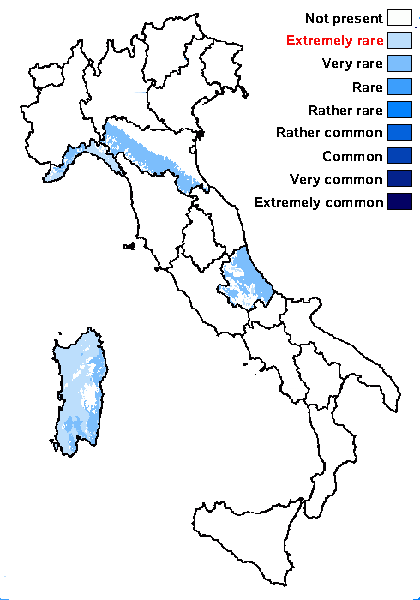
Predictive model
Herbarium samples
Growth form: Crustose
Substrata: soil, terricolous mosses, and plant debris
Photobiont: green algae other than Trentepohlia
Reproductive strategy: mainly sexual
Subcontinental: restricted to areas with a dry-subcontinental climate (e.g. dry Alpine valleys, parts of Mediterranean Italy)
Commonnes-rarity: (info)
Alpine belt: absent
Subalpine belt: absent
Oromediterranean belt: absent
Montane belt: absent
Submediterranean belt: very rare
Padanian area: absent
Humid submediterranean belt: extremely rare
Humid mediterranean belt: extremely rare
Dry mediterranean belt: extremely rare

Predictive model
| Herbarium samples |
 Index Fungorum
Index Fungorum
 GBIF
GBIF
